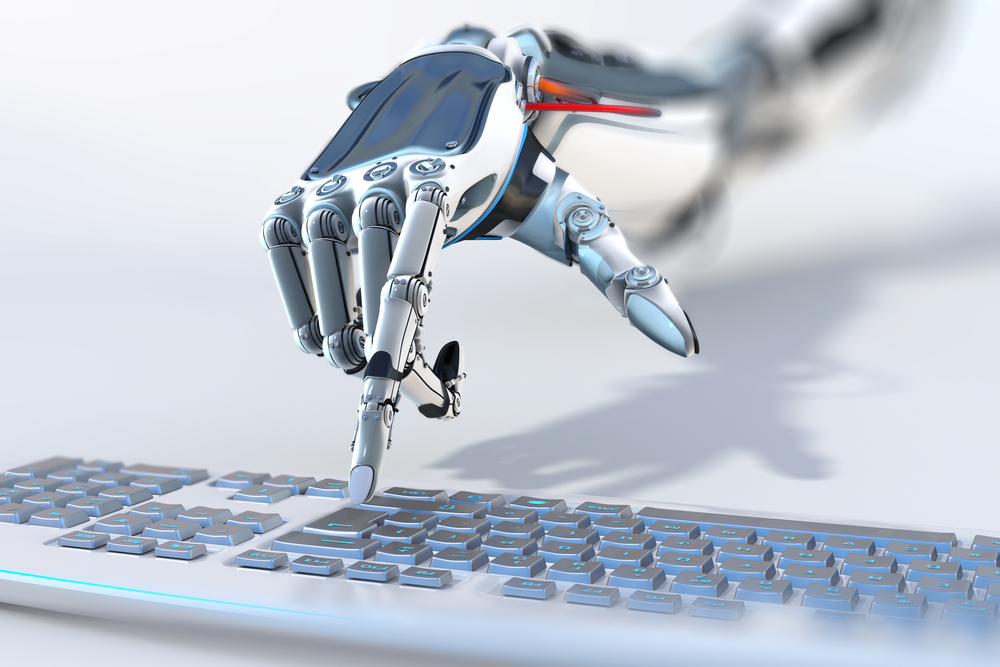Despite decades of investments in IT, knowledge work has been largely unaffected by productivity technologies up to this point. Even with the introduction of dedicated process management systems it still requires human operators to carry out manual, often highly tedious and repetitive tasks to synchronise back-office systems.
Tasks such as data entry, account maintenance, creation of user IDs, passwords and even raising invoices are manual tasks. This situation could be about to change. Why? In a word: robots.
Robots are coming off factory floors and entering the white-collar workforce, taking up entry-level posts in service corporations and disrupting the enterprise. These enterprise robots are not clanking around the office, taking up space and typing on keyboards.
>See also: Man vs machine: productivity, creativity and job creation
Rather, they can be thought of as a virtual employee, or virtual workforce, rendered in software with comparable skills to a human worker. The robots read screens, write administrative programs and communicate with both humans and other robots.
In essence, these software robots are capable of carrying out work with the same capacities as their human counterparts. They are even trained.
Unlike humans, however, robots are tireless, able to work around the clock. As you can imagine, this 24-7 virtual workforce offers tremendous efficiency gains. Recent research from London School of Economics (LSE) suggests return on investment of between 600% and 800% for specific tasks.
In one case study, telecom provider O2 has tapped software robots to drastically reduce SIM card data transfer processes. Now, customers can have their new phones working in a matter of seconds, as opposed to up to 24 hours.
In many ways, the software robot represents a serious upgrade to the entry-level human back office worker. Take scalability, for example. The LSE research team says scalability was unbeatable for O2. ‘Its robotic workforce could be doubled almost instantly when new products were about to be launched,’ it says, ‘and then scaled back down after the surge.’
Dealing with demand fluctuations has been a bane of most operations – not least are the security questions around taking on temporary staff. Robots – no such issue.
Process accuracy is another advantage of robotic automation. As soon as a manager trains a software robot, it instantly becomes an expert on the given process – able to complete the necessary steps with 100% precision.
LSE estimates that O2 reduced customer chase-up calls by a staggering 80% because fewer customers needed to chase requests. The robot also remembers how to perform a process. It builds a repertoire of capabilities overtime that, whenever needed, can automatically be retrieved so as to execute the procedure. Learning becomes an asset of the business.
Added to improved process quality, efficiency and customer experience delivery, businesses that implement virtual workforces have found that there are far greater opportunities for innovation.
Software robots cover simple, mundane tasks – the trench work for service teams. An obvious concern is how hungry these new job seekers will be in displacing their human counterparts. This anxiety is somewhat of a recurring theme within technology with mixed predictions.
Flashback to the 1970s when there was widespread concern about the potential lack of work in the imminent future. Many wondered whether people could survive a life of leisure. Two centuries before that, even in the midst of serfdom, Voltaire raised the point that ‘work saves us from three giant evils: boredom, vice and need’.
How far the rise of automation goes in bringing a ‘life of leisure’ will be seen. One counter point is that real-world use cases of software robot adopters suggest human teams are freed to do more creative tasks and that the instincts of the business is to improve capacity and service quality – tasks that can now be addressed without the constant demands of busy fulfilment.
Humans orchestrate and robots do. Rather than eliminating workers, organisations improve capacity. Software robots perform time-consuming administrative tasks, while people dedicate their efforts to strategic and creative areas that add long-term value to their organisations and customers. Human thinking becomes another asset.
Sourced from Jason Kingdon, chairman, Blue Prism







